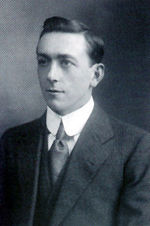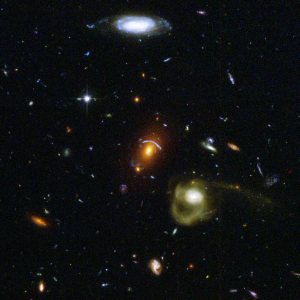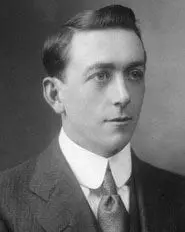I enjoyed Cherry Lewis’s fascinating biography of Arthur Holmes (1890–1965), the English geologist famous for his work on radioactive dating and the age of the earth. It traces how ideas about the age of the earth changed over one man’s lifetime. Dr Lewis is a geologist/geochemist, currently working as Research Communications Manager at Bristol University, and is Secretary of the History of Geology Group (HOGG) there.
Holmes was ‘the only child of staunchly Methodist parents’ (p. 7) and he ‘well remembered his parents’ Bible, and the magic fascination of the date of Creation, 4004 bc’ (p. 27). In later years Holmes reminisced ‘that the Earth has grown older much more rapidly than I have—from about six thousand years when I was ten, to four or five billion years by the time I reached sixty’. I would like to learn more about Holmes’ own reasons for his apostasy from his Christian heritage, because his story sadly is all too common.
A short, interesting book, The Dating Game is filled with photos and human interest. Lewis has researched her topic thoroughly, and quotes widely from diaries and letters. Clearly, Holmes was a perceptive and independent thinker, a dynamic lecturer and diligent worker.
Is it really a game?
Those who think that science has proved the earth is billions of years old should find this book disturbing. Lewis clearly shows that the quest for the age of the earth is not objective science but a subjective, arbitrary and erratic pursuit.
Even her name for the book illustrates that point. Some reviewers must have urged her to use a different title, but what could be more fitting than The Dating Game? Lewis refused to change it, but apologized to any readers who found the book ‘on the “Romance” shelves’ (p. 242).
Before anyone can calculate an age for anything, they have to assume its history.
My dictionary defines ‘game’ as ‘a contest for amusement in the form of a trial of chance, skill or endurance according to a set of rules’. She vividly paints the characters of the players in the ‘dating game’, and tracks the progress of the score for a hundred years. To the uninitiated, a history like hers is one of the best ways to understand a subject.
In a game, the score is determined, not by impersonal scientific measurement, but by the strength, skill and creativity of the players. The rules of play are not laws of nature, but arbitrarily agreed by the players, and sometimes changed during play. We see this acutely demonstrated in the events she describes.1
Holmes’ interest in the game was aroused in his teens one summer holiday. This is when the great physicist William Thomson (Lord Kelvin, 1824–1907) instigated the dating game in The Times. Lewis described how Arthur and his friend ‘were on the edge of their seats with the excitement of it all, for not only did they become familiar with all the arguments, they also got to know all the big names in science at that time—William Ramsay, Ernest Rutherford, Frederick Soddy and Robert Strutt’ (p. 12). Watching The Times exchange influenced Holmes to take up the sport.
The Kelvin affair
Holmes began his career at a most interesting time, as Lewis describes. For forty years Lord Kelvin had completely demolished all opposition. But by the early 1900s, Kelvin was gradually losing his dominance. The upcoming generation had a new weapon and were about to dislodge him. Holmes would soon be a key player.
Photo by Andrew Snelling

Lord Kelvin was a major player in the dating game.
By the end of the 1800s, Lord Kelvin was saying that the earth was between 40 million and 20 million years old, with a ‘personal preference’ for the lower value (p. 39). Of course Kelvin had not measured the age (otherwise he would not talk about ‘personal preference’), but he had calculated it (or rather, logically his methods could calculate at best an upper limit for the age). And before he could start his calculations, he had to make assumptions about the past. In particular, he had to assume a history for the earth.
In fact, every age calculation is based on an assumed history—assumed because, without an eyewitness report, we cannot travel back in time to observe what happened. This reality is not generally recognized—that it is impossible to measure the age of something scientifically—impossible. The numbers quoted for the age of the earth (or the age of the dinosaurs or the age of a volcano) are the outworking of personal beliefs, made to look authoritative by much technical equipment and complicated calculations. It is not until we understand this fundamental fact that the antics of the players in the dating game make sense.
In Kelvin’s case, he assumed the earth was initially a molten blob and calculated how long it would take for the blob to cool (assuming numbers for all the relevant parameters such as its initial temperature, conductivity and reflectivity).
Was Kelvin’s answer right? Scientifically, it is impossible to say. How could anyone check? What would you compare it with? You could only say whether it seemed reasonable, and Kelvin certainly thought so. For a start, it agreed with similar calculations of the age of the sun by Hermann von Helmholtz (1821–1894).2
But for the geologists (and evolutionary biologists as shown below), 20 Ma was far too short because they envisaged the earth was unimaginably old. Kelvin knew their long ages flowed from their assumption that geological processes have always operated slowly, like they do at present. They were not based on experimentally established laws such as the laws of heat transfer. Kelvin was blunt, ‘A great reform in geological speculation seems now to have become necessary’ (p. 35). In other words, Kelvin challenged them to assume a different history. He knew the geologists could easily harmonize their age for the earth with his result by imagining a bit of catastrophe.
The geologists did not take kindly to Kelvin’s suggestion. ‘Although incensed,’ Lewis explained, ‘most geologists were clearly intimidated by Kelvin’s authority and felt obliged to heed his arguments’ (p. 35).
The problem was not his ‘authority’. The problem was that they agreed with his assumed history for the planet, and could find no mistake with his chosen parameters. After that it was just a matter of cranking the mathematical handle and the age popped out.
But T.C. Chamberlin (1843–1928), head of the Department of Geology at the University of Chicago was not prepared to concede defeat. He speculated that there might yet be discovered new sources of energy within the particles of matter (unknown to him then) that would allow more time than Kelvin had calculated.2 In geological circles this response is regarded as heroic but it really shows that the age issue cannot be resolved scientifically. Clearly, he was simply defending his belief in long-ages as a matter of faith, without any observational basis whatever.
The evolutionary biologists such as Charles Darwin and T.H. Huxley were not happy with Kelvin either. 20 Ma was nowhere near enough time for evolution to occur. Darwin was particularly dissatisfied, describing Kelvin as his ‘sorest trouble’ (p. 35). That suited Kelvin because he opposed evolution. Loren Eiseley writes:
‘It can be observed from Darwin’s letters that this development in physics gravely troubled him. He refers to Lord Kelvin as an “odious spectre”, and in a letter [of 1869] … he writes: “Notwithstanding your excellent remarks on the work which can be effected within a million years, I am greatly troubled at the short duration of the world according to Sir W. Thomson [Lord Kelvin] for I require for my theoretical views a very long period before the Cambrian formation.” … Painfully and doubtfully he [Darwin] wrote to Wallace in 1871, “I have not as yet been able to digest the fundamental notion of the shortened age of the sun and earth.”’3
Christians often regard Kelvin as a great creationist apologist because of his opposition to evolution. They credit him with keeping Darwin at bay for 40 years. But Kelvin did serious damage to the credibility of the Christian worldview because he publicly promoted an earth history that contradicted the Bible. The Bible says the earth was originally covered with water; Kelvin said it was a molten blob. The Bible indicates the earth is 6,000 years old; Kelvin said 20 million was acceptable. If Christians won’t stand on the plain teaching of their own book, why should anyone else accept the Bible as authoritative?
Radioactivity changed the game
So the dating game was set for a fascinating turn when Holmes began his career. The dynamics changed dramatically when (Antoine-) Henri Becquerel (1852–1908) discovered radioactivity in 1896. Heat generated by the radioactive decay of elements within the earth was quickly invoked to explain cooling of the earth over long ages. Thus, radioactivity allowed a different history for the earth to be proposed, one that could extend ‘for as long as geologists and biologists might need’ (p. 49)—notice the word ‘need’! It is widely paraded that the discovery of radioactivity solved the heat problem but that is not so. Empirical evidence still favours the view that the earth is much younger than presently believed.4

Arthur Holmes
Most importantly, radioactivity allowed age calculations to be applied to individual rocks and minerals, and this is where Holmes became famous. It was Ernest Rutherford (1871–1937), Lewis explains, who was the ‘very first person ever to date the true age of a rock’ (p. 54). Her word true is curious because her explanations demonstrate that ages are not found but assumed. (Remember, every age calculation is based on assumptions about the past.) Two pages later, Lewis says that Robert Strutt ‘recognised the flaw in the method’ (p. 56). So much for Rutherford’s true age.
Apart from the ‘flaw’, Lewis reveals that in those early days they did not know there were two different uranium decay chains or different isotopes of uranium and lead. In fact, they did not know isotopes existed—this had to wait till Frederick Soddy (1877–1956) in 1913 (pp. 112–115). This illustrates another vital fact about the dating game: assumptions are always made in ignorance. That’s why every age result is always tentative, just waiting for a new finding to knock it over, as Lewis illustrates again and again.
Holmes was just 21 when he published his first uranium-lead result for a rock from Norway (still before the discovery of isotopes). He also recalculated ages from data previously published by Boltwood, the oldest result being 1,640 million years (pp. 63–64). That was a vast increase on any numbers previously published. The response of the scientific community was stunned incredulity. Geologists ‘had been given vast time scales to fill with sediments of which there was no evidence’ (p. 65).
Methods and dates are selected
One interesting episode Lewis describes involved ‘dating’ two rocks from northern England using the helium method (pp. 149–150). The ‘dates’ Holmes obtained were 182 million years for the igneous sill, and 26 million years for the dyke. Holmes was delighted. He considered the results ‘to be in excellent agreement with the geological evidence’. But then, how would anyone know?
But today the sill is considered to be 295 million years old, not 182 million, and the dyke 60 million years compared with 26 million. The helium method has been blamed for the discrepancy because it is held that helium leaks from the rocks, giving too low an age.
But why did Holmes so quickly accept a faulty method? Lewis explains,
‘So strong was the desire to find a successful dating technique, he convinced himself that although the helium results were “slightly low”, they concurred “quite satisfactorily with the scanty results based on lead ages”’ (p. 151).
So much for objective scientific methods.
Interestingly, the helium method continued to be used on meteorites and some very ancient dates were obtained (p. 221). It was argued that, unlike terrestrial samples, meteorites did not lose helium (again, how would you know?). However, when ages were obtained that were anomalously high (i.e. did not agree with what was expected), it was suggested that meteorites gained helium by being bombarded by cosmic radiation as they cruised the heavens. This is another example of an ad hoc assumption invoked to dismiss anomalous results.
These stories illustrate how in the dating game, the methods used, and dates obtained, are selected after the event according to whether the results agree with what is already believed and desired to be correct. Recent creationist work is particularly relevant to the helium method. Helium retained in zircons from granite actually provides strong evidence against the idea of millions of years, and for the idea that accelerated nuclear decay occurred in the past. A main pillar of the argument is precisely the rapid leakage of helium noted above—yet much helium still remains in the zircons!5
The Hubble affair
Image by NASA, ESA, J. Blakeslee and F. Ford (JHU)

In the late 1940s the age of the earth became twice as old as the age of the universe!
Lewis describes a curious complication that emerged in the late 1940s. As the age of the earth gradually crept up towards 3000 million years, and beyond, the earth eventually became twice as old as the universe (p. 191). As with Kelvin, the issue became a battle of wills across scientific disciplines.
The age of the universe was calculated from the Hubble constant, assuming the big bang history for the universe. Edwin Hubble (1889–1953) had such standing that no-one seriously questioned his value for the constant. As recently as 1936, Hubble had concluded that any further revision of the constant would only be of minor importance.
So the blame was levelled at radioactive dating. Even in 1949 it was considered highly improbable that observational changes in the value of the Hubble constant would resolve the timescale problem. Some astronomers were again suggesting that the radioactive decay rate had changed with time (yet modern creationists are castigated for the same suggestion!).
But the astronomers eventually gave in. In the 1950s new measurements of the Hubble constant extended the age of the universe and at last it was ‘safely older than the age of the Earth’ (p. 191). This dramatic episode again illustrates that the age issue is a battle of wills and beliefs, and not a scientifically measurable parameter.
Patterson takes the prize
As readers would expect, Lewis reveals the answer to the age question just before the end of her book. She relates that Clair Patterson (1922–1995) ‘goes down in the history books as the man who finally dated the true age of the Earth. Wild miracle, finally achieved’ (p. 225).
But here we see an ironic twist. Patterson did not date the earth primarily using earth rocks. His key evidence came from meteorites! What have meteorites to do with the age of the earth?
Remember that before anyone can calculate an age for anything, they have to assume its history, namely how it formed and what has happened to it from that time to the present. Early in the 20th century, T.C. Chamberlin had developed the idea that the earth had formed by the accumulation of cold, solid particles and rocks he called ‘planetesimals’. By the 1950s this explanation was widely accepted, and meteorites were considered to be junk left over from when the earth formed.
The number calculated from the meteorite data based on these assumptions gave an age of 4.55 ± 0.07 Ga, the age Patterson announced in 1956,6 and which is still accepted today.
At first Holmes was not enthusiastic with the method
‘to use the isotopic composition of lead from iron meteorites as part of the basic data for calculating the age of the earth or its crust, is unsound in principle … the correct procedure is to use terrestrial materials’ (p. 227).
That of course raises one very obvious problem. As Lewis explains,
‘If there was no genetic relationship and the Earth and meteorites had not formed at the same time from the same material, then the primeval lead of meteorites would not be that of the Earth; thus there would be no point of trying to determine the age of Earth from meteorites, and everyone would be back to square one’ (p. 225).
To answer this challenge, Patterson produced a graph in 1956 showing the isotopic composition of lead from four meteorites and lead from modern ocean floor sediment. Because the ocean floor sample plotted on the same line as the meteorites, Patterson argued that they all formed from the same cosmic material (p. 226).
That settled the matter, and the age of 4.55 Ga is universally quoted. Yet, as more ocean floor sediment has been analyzed, it has been found that they do not all fall on the straight line but plot all over the place.7
Another problem concerns a view developing ‘that the lead isotope clock of the Earth may have been reset by the formation of the Earth’s core’ (p. 227). In other words, the consensus history of the earth is different now from what Patterson assumed, yet his result is still accepted as the true age of the earth. As Lewis muses, ‘Patterson’s results were more fortuitous than was realised fifty years ago’ (p. 228). This raises a question: if we know Patterson’s assumptions are wrong, why should we believe that his answer is right?
Clearly the age of the earth is not a scientific issue but a religious and philosophical one.
Why no more changes?
Lewis’s book highlights another fascinating insight into how science works. In the first fifty years of the 20th century, the age of the earth increased from 20 million years to 4,550 million. But in the second fifty years the age has not changed at all. Why?
Some would argue it’s because scientists have discovered the correct answer. But how would anyone check? It could also be argued that the changing age was driven by changing cultural and philosophical values in the West. Holmes lived through a period that saw the progressive development of an all-encompassing naturalistic philosophy in Western thought. All supernatural actions by a Creator God were ruled out; only naturalistic explanations were allowed.
The key parameter for every naturalistic explanation is time:
‘Time is in fact the hero of the plot … given so much time the “impossible” becomes possible, the possible probable and the probably virtually certainly certain. One has only to wait: time itself performs miracles.’8
In the first fifty years, every academic discipline was developing its naturalistic models. The age of the earth was the crucial parameter in every case: in geology, biology, astronomy, cosmology, geography, archaeology, anthropology, history and so on. Enough time for one discipline was often too little for another—hence the Kelvin and Hubble conflicts. With the present state of play, anywhere between 3 and 7 billion years would probably be suitable. So 4.55 billion is a happy choice—and it looks precise and authoritative.
4.55 billion years is comfortably less than the age of the universe, allowing enough time for the big bang, stellar evolution and the origin of our solar system. It is also allegedly old enough for geological evolution, for the chemical evolution of the first living cell, for the evolution of life, and for landscape evolution, etc. So by the mid 20th century the jostling between disciplines had settled down—the different naturalistic models appeared to be meshing together. Everyone had enough time to work with, and there was nothing to gain by changing the number.
It affects me personally
The age of the earth is not just an academic issue. As Lewis states,
‘By knowing the age of Earth rocks, Moon rocks and rocks from other planets we … are more able to understand our place in the order of things, our relationship with other celestial bodies. It helps us to navigate our way around the Universe and build up a picture of why we are here at all’ (p. 4–5).
That, of course, is a religious question involving the meaning of life. In Mozambique in his early twenties, Holmes wrote home about the stars: ‘I felt somehow what a fearful meaningless tragedy the whole Universe appeared to be’ (p. 93). If naturalism is true, then Holmes was right—there is no meaning to this Universe.
However, the Bible reveals the true history of the world and why we are here. There is a purpose for this universe, and for every human life. That’s why the age of the earth is a critical issue for the Christian worldview. Long ages destroy the credibility and message of the Bible.9
I enjoyed Lewis’s book because she so vividly demonstrated that the billion-year age of the earth is subjective and arbitrary. Thus, it is perfectly valid scientifically to start with the biblical data on the age of the earth and interpret the scientific evidence accordingly. In reality, the only sure way of knowing the age of anything is by reliable eyewitnesses.







